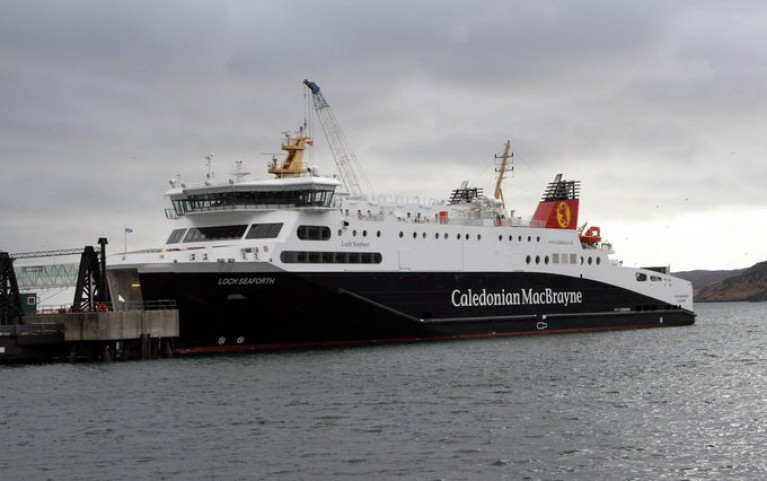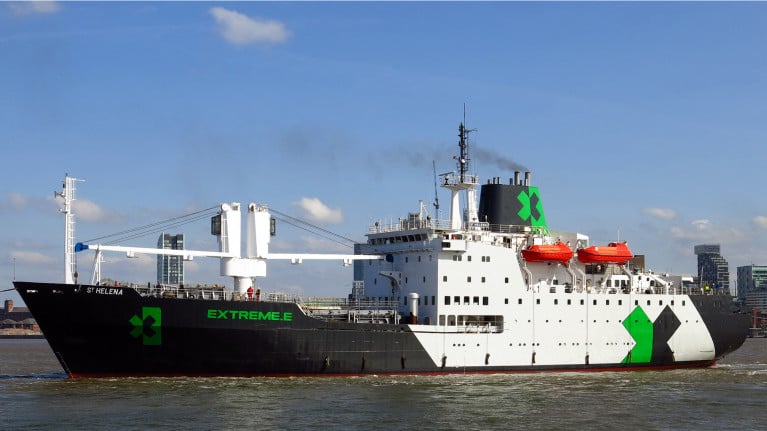Displaying items by tag: Shipyard
CalMac's Biggest Ferry Finally Returns to Scotland's Western Isles after Weeks of Chaos
The biggest Scottish Western Isles ferry was due back in service (yesterday) after nearly seven weeks of for repairs on the Clyde as Afloat reported in April.
As the Herald writes, MV Loch Seaforth was taken off the Ullapool-Stornoway (Isle of Lewis) route by the state ferry operator, CalMac in mid-April and taken into dry dock for "major" engine repairs.
It led to persistent six delays in getting the ferry back in service as repairs continued.
Now Scottish Government-funded CalMac CalMac say sea trials on the MV Loch Seaforth have been successful and the ferry will return to service as planned. (Afloat today tracked the 700 passenger car ferry operating back on its routine route).
Following major repairs, the ferry departed the James Watt dock in Greenock on Friday and completed 50 hours of sea trials before arriving in Stornoway.
Further tests were carried out on Monday (yesterday) and they were also successful.
The newspaper has more details also on CalMac's southernmost routes, among them the Arran route and those to the Mull of Kintyre as Afloat previously reported.
Afloat also adds the 8,000 gross tonnage Glasgow registered ferry built, after making a delivery voyage to Scotland from the FSG Flensburg shipyard in 2014, surprisingly headed into the Irish Sea (off Wicklow Head) for further sea trials.
The German shipyard was also responsible for launching Seatruck's Irish Sea quartet of 'Heysham' max ro-ro freight ferries during 2011-2012.
In addition Irish Ferries cruiseferry W.B. Yeats launched by FSG in 2018, but did not enter service until early in the following year, firstly on the Irish Sea prior to making a debut on an Ireland-France link.
The Irish Sea shipyard of Cammell Laird in the UK at Birkenhead on Merseyside has reported a strong 2020 despite the challenges of Covid-19 – with its construction hall, workshops and dry docks in continuous use since the start of the year.
Speaking about operating during a global pandemic, the CEO of Cammell Laird, David McGinley said: “Despite the restrictions and challenges of the last few months, the needs of our clients have not changed, and we have seen consistent demand for our engineering expertise and on-site facilities.
“The team has shown fortitude, commitment and agility throughout, which has been instrumental in keeping clients’ vessels operational and maintaining our reputation for engineering excellence.”
Projects of note during 2020 have included achieving a series of important milestones in the construction of RRS Sir David Attenborough – the research ship that will transform how ship-borne science is carried out in the Polar Regions.
Cammell Laird has tested and commissioned the vessel’s lifeboats and power systems and most recently, the water mist fire protection system. Work is now focused on readying the vessel for sea trials in October, which includes commissioning and testing the marine propulsion systems as well as checking the vessel’s scientific underwater sensors and deployment mechanisms.
Other notable projects include the ongoing transformation of unique cargo-passenger ship RMS St Helena (see Irish call) and later London, as she becomes a mobile hub for the Extreme Electric SUV racing series.
Cammell Laird is also preparing for the start of the next ferry season, which will see the return of all four Calmac Ferries (CalMac) for their annual maintenance periods.
Focusing on Cammell Laird’s roster of defence work, the yard has welcomed the first of the UK's Royal Navy’s Type 45 class of destroyer to Birkenhead.
Dauntless is undergoing her Power Improvement Programme (PIP), which will improve the resilience of the power and propulsion systems by replacing two diesel generators with three new systems and modifying the high voltage system.
In addition Afloat adds contracts for the RFA'S Tide class replenishment tankers that entered service for the UK's Royal Fleet Auxiliary from 2017. These ships provide in the provision of fuel, food, fresh water, ammunition and other supplies to RN vessels around the world.






























































